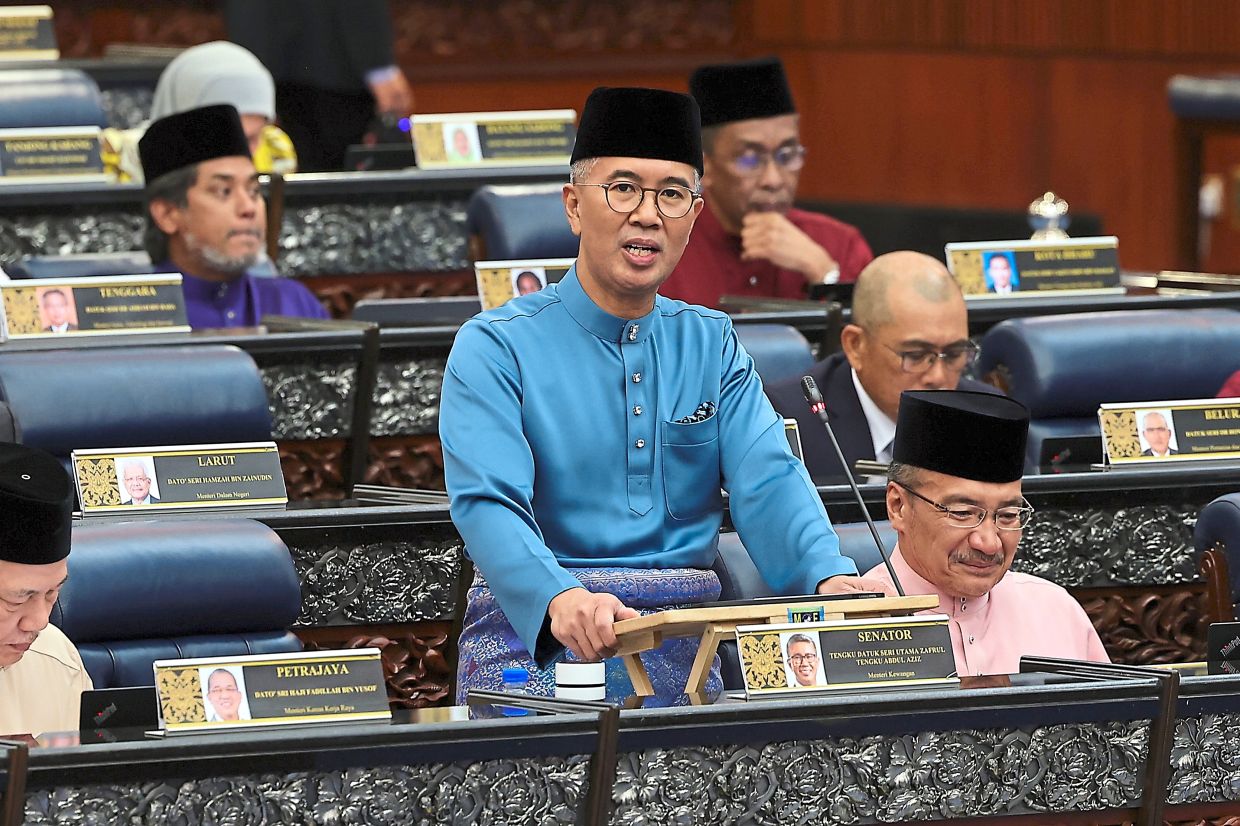IT is very concerning to hear that the recently-announced budget (Budget 2023) represents an RM40.2 bil increase compared to the RM332.1 bil allocated for 2022.
On the day before the Budget speech, the Public Accounts Committee (PAC) expressed concern over the RM100 bil increase in the Federal Government’s debt in a span of a year.
It is important to be reminded of the concerns raised by PAC, which were:
- The practice of using new loans to repay mature loans, the reduction in development expenditure, and the increase in federal debt and;
- On interest payments, the PAC’s report noted that 16.3% of revenue collected by the Government was used to pay loan interests, which reflects that for every RM1 in revenue collected, 16 sen are being used to pay loan interests.
What is there in 2023?
- Global recession
On Oct 6, the International Monetary Fund (IMF) warned the world about higher recession risks and a darker global outlook in 2023, most probably caused by the COVID-19 pandemic, Russia’s invasion of Ukraine and climate disasters on all continents. The IMF also said that there is a possibility that it could get worse.
Emerging and developing countries have already been hit hard with high food and energy prices.
- Food crisis
The food crisis could worsen in 2023, with a supply squeeze overtaking logistical constraints as the key challenge.
The situation worsened with the war in Ukraine that pushed the prices of food and fertilizers higher, hurting importers and prompting several countries to impose export restrictions.
With the expectation of having a food crisis in the coming years, China is currently building up huge stockpiles to cope with shortages and creating new seeds to boost output for local consumption.
On the other hand, India has restricted exports of some varieties of rice as the world’s largest supplier tries to ensure domestic provisions amid global pressure on the food market.
- Interest rate hike
Higher interest rates will result in lower disposable income, which will be translated to lower purchasing power.
It is crucial to understand that the higher the inflation rate, the higher the interest rates are likely to rise. This is to cater to the expectation of the lenders (who will demand higher interest rates) to compensate for the decrease in purchasing power of the money they are paid in the future.
The Budget
It is important to have in mind all of the above expectations we will be facing in 2023. The announcement of the Budget has somehow put very low emphasis on ways to tackle such expectations next year.
The emphasis of the Budget is mostly on promoting spending through various cash assistance programmes in the midst of an inflationary environment when it is obvious that increasing the money supply will further increase the price of goods in the future.
It is also crucial for us to realise that 60% of Malaysia’s food is imported. Hence, it is a disappointment to acknowledge that such low emphasis has been given to the agriculture sector despite the expected food crisis in 2023 (only RM1.8bil in subsidies and incentives were allocated in the sector of the economy).
Expectations and transparency
In addition to the above, I would like to urge Finance Minister Tengku Datuk Seri Zafrul Tengku Abdul Aziz to present to the public the utilisation rate of all funds and schemes that has been located under Bank Negara Malaysia (BNM), all the ministries and Government-linked companies (GLCs) in 2022 in comparison to all the schemes and funds allocated for 2023.
The Budget has somewhat been announced without transparency on the utilisation rate of each of the components in Budget 2022. For transparency and performance purposes, I do believe that it is crucial for the public to be made aware of the Budget 2022 utilisation rate in comparison to the recently- announced Budget 2023.
In addition, it is also important for the public to know how the national debt will be paid in 2023 as we are expecting Federal Government revenue to drop 4.4% to RM272.57 bil in 2023 from a growth of 22% (RM285.22 bil) in 2022.
It is definite that higher Government spending raises major concerns over whether it is sustainable in the long run as the Budget indicates the very least commitment to expand the Government’s revenue base given the high debt ratio and rising inflation reported.
In conclusion
If all the aforementioned scenarios happen in 2023, will we be able to stay strong and be more self-sufficient in Malaysia? It looks like there is still a long way to go.
However, it is important for the public to start to care about all the national policies, Budgets and agendas the Government is mentioning because, at the end of the day, the choice is in your hand.
The future is for our children; hence, seeking knowledge and being knowledgeable are the keys to the betterment of this nation. – Oct 8, 2022
Currently a certified senior risk analyst working in the banking industry, Sharifah Azzahra has been contributing her opinions on politics and socio-economics to various Malaysian media. She previously worked in New Zealand as a risk manager, at the Malaysian Parliament as a junior researcher and at the Labuan Offshore Financial Services Authority (LOFSA) as a strategic risk analyst.
This opinion piece first appeared in businessnews.com.my.
The views expressed are solely of the author and do not necessarily reflect those of Focus Malaysia.
Main photo credit: Bernama










